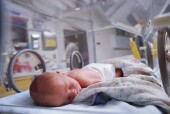
MONDAY, Sept. 9 (HealthDay News) — Researchers say they’ve pinpointed risk factors that contribute to cerebral palsy and early infant death.
The U.S. and Australian researchers compared the medical records of children with cerebral palsy and infants who died within one month of birth with the records of healthy children to determine how often four risk factors occurred in each group.
The risk factors included asphyxial birth events — incidents during labor and delivery that had the potential to interfere with oxygen getting to the newborn’s brain. The other risk factors were inflammation (signs of infection), birth defects and poor fetal growth, which was defined as low birth weight plus some other factors related to expected size.
Birth defects and poor fetal growth were the most common risk factors among the cases of cerebral palsy and early infant death, said Dr. Karin Nelson, scientist emeritus at the U.S. National Institute of Neurological Disorders and Stroke, and colleagues.
They also found that only birth defects or poor fetal growth predicted two types of movement problems associated with cerebral palsy: dyskinesia (uncontrollable writhing or jerky movements) and spastic quadriplegia (severe stiffness in the limbs).
The study was published Sept. 9 in the journal Obstetrics & Gynecology.
The study tied certain factors to higher risk of cerebral palsy or infant death, but it didn’t establish cause-and-effect relationships.
Many previous studies examining the causes of cerebral palsy have focused on asphyxial birth events, according to an NINDS news release. But the authors of the new study said their findings indicate that poor fetal growth and birth defects may be major factors in cerebral palsy and early infant death, which suggests that researchers should focus more on those specific risk factors.
More information
The March of Dimes has more about cerebral palsy.
Copyright © 2025 HealthDay. All rights reserved.

